Amidst all the great pulp thrills and features in Sky Fighters, they ran a true story feature collected by Ace Williams wherein famous War Aces would tell actual true accounts of thrilling moments in their fighting lives! This time we have Canada’s Lieutenant Alan McLeod’s most thrilling sky fight!
Alan McLeod was one of 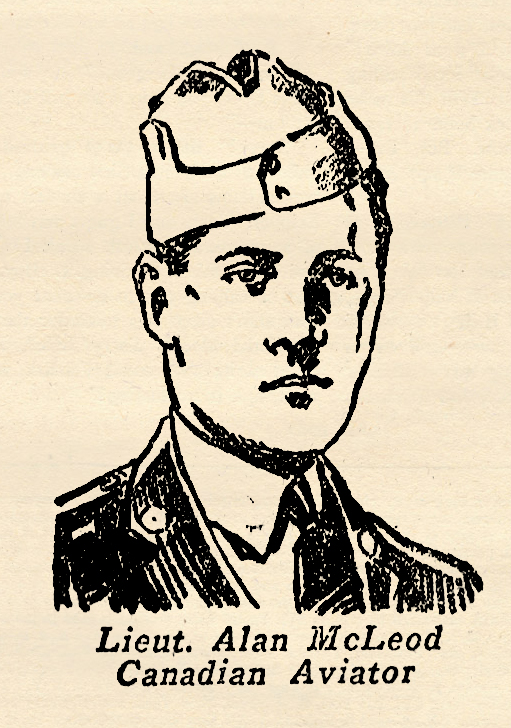 the three Canadian airmen winning the coveted award of the Victoria Cross, the highest honor bestowed on its fighting heroes by the British Empire, He was the youngest flyer ever to receive the honor, having it pinned on his chest in appropriate ceremonies at Buckingham Palace a few months before his nineteenth birthday.
the three Canadian airmen winning the coveted award of the Victoria Cross, the highest honor bestowed on its fighting heroes by the British Empire, He was the youngest flyer ever to receive the honor, having it pinned on his chest in appropriate ceremonies at Buckingham Palace a few months before his nineteenth birthday.
Whereas most of the other British airmen who received this coveted honor accomplished their deeds of heroic valor in fast, single-seater fighting machines, young McLeod used a heavy, unwieldy, Armstrong-Whitworth two-seater which was poorly equipped for air combat. But Alan McLeod used it just as though it were a pursuit ship, never running from a possible chance lo shoot it out with enemy planes in the air, no matter how heavy the odds were against him. The fight he tells about below is one of the great epics of the air. McLeod was wounded six times, but recovered, only to succumb to influenza five days before the armistice was signed.
DOWN IN FLAMES
by Lieut. Alan McLeod, R.F.C. • Sky Fighters, June 1934
WHEN zooming up after dropping my last bomb, I saw a Hun Fokker, coming at me from the rear. I swung my machine up on one wing, gave my observer, Hammond, in the back seat, a chance at it. His first burst of Lewis fire was effective. It went fluttering down like a falling leaf, swaying from side to side.
I climbed for altitude then. At 5,000 feet the sun broke through the clouds. A flight of eight scarlet-painted Fokker tripes burst through with the sun. One dived, then zoomed up under my tail. I banked steeply. Hammond got his guns on it just as the Hun let go with a burst that crackled through the lower wing just beyond my head. It went spiralling down, a black smoke trail pluming behind it.
The seven other Fokker tripes dived in with a vengeance then, attacking from all sides, and simultaneously! The air was full of German tracer. My wings were sieved. Flying wires snapped, coiled up like watch springs. I felt something like a hot knife slide across my stomach. A red shape flashed down in front of me. I pressed my gun triggers, sent in a withering burst of lead that seemed to splatter like a pinwheel as it hit. More struts on my plane cracked, shattered, sheared in two from Spandau bursts. A sharp pain stabbed me in the groin. But the red Fokker went to pieces in the air, tumbled down beneath me.
I glanced back. Tracer streams from two Fokkers were pouring at Hammond. One of his arms was hanging limply. Blood saturated his mitten. He was aiming his Lewis’ with the other hand. I went around in a sweeping, climbing turn, to get him above the attackers. Our plane groaned, crackled some more. More holes appeared like lightning in the upper wing, the lower. Another sharp pain stabbed through my lower right leg. A burst of German tracer found my petrol tank, it puffed into flames. I got in a final shot at a red Hun who swept across my path. He went down, out of control.
The heat from the burning tank lashed back in my face. Flames, choking smoke swirled in the cockpit. I loosened my belt, stepped out on the lower left wing. Holding on with my left hand, moving the stick with my right, I threw the machine into a steep side-slip, blowing the flames and smoke away from us.
Two Fokkers slid down with us, firing as they came.
Hammond, weak and reeling in the back pit, got one of them just before we hit the ground, then climbed up on the top wing. The machine crashed, thudded, bounced, throwing me off. Hammond was swept back into his pit. Flames and smoke enveloped him, the whole machine.
I raced back, pulled him out, carried him away from the fire. Bullets thudded around us, machine-gun and rifle bullets from the Huns in their trenches, not two hundred yards away,
I kept going away from them until a deep blackness descended. That is all I remember.
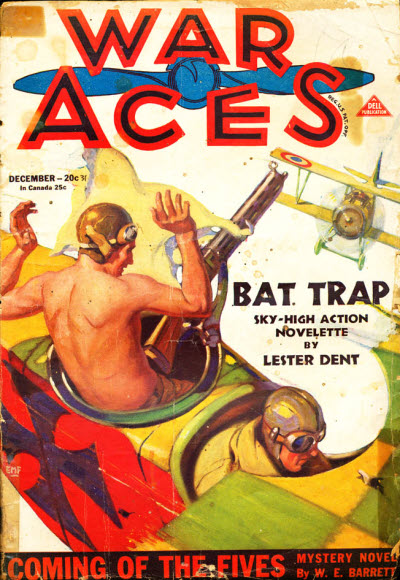 Mosquito Month we have a non-Mosquitoes story from the pen of Ralph Oppenheim. It’s a humerous tale of Lieutenant Sleepy Miller—so named because he could fall asleep anywhere at anytime—even in the middle of a war with bombs going off all around him. From the December 1931 issue of War Aces it’s “Lazy Wings.”
Mosquito Month we have a non-Mosquitoes story from the pen of Ralph Oppenheim. It’s a humerous tale of Lieutenant Sleepy Miller—so named because he could fall asleep anywhere at anytime—even in the middle of a war with bombs going off all around him. From the December 1931 issue of War Aces it’s “Lazy Wings.”







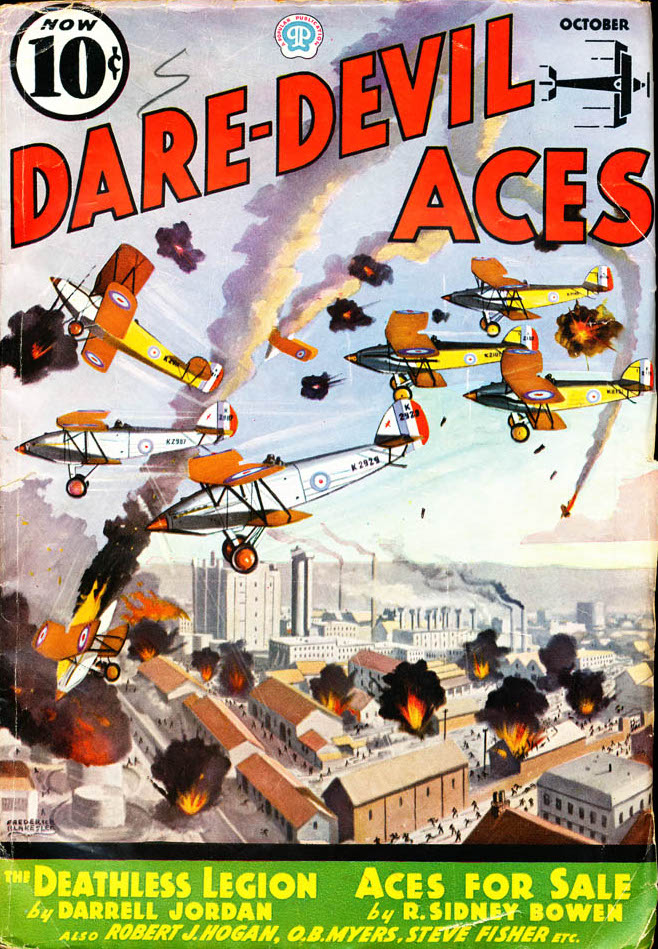 is best known for his hardboiled work in
is best known for his hardboiled work in 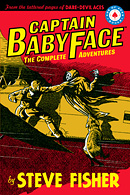 by Steve Fisher, check out
by Steve Fisher, check out 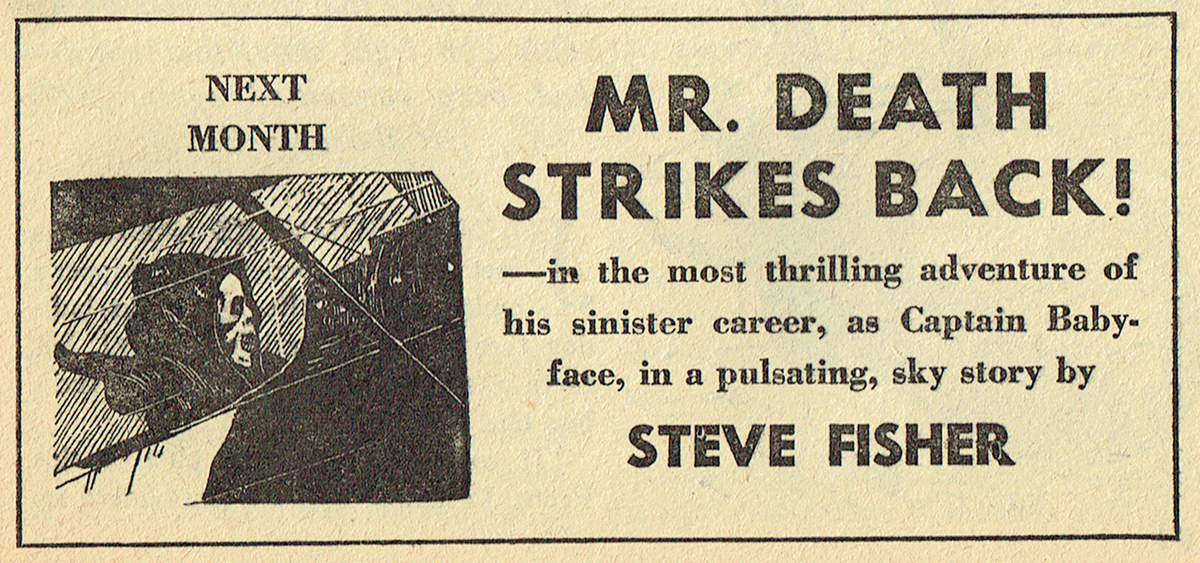

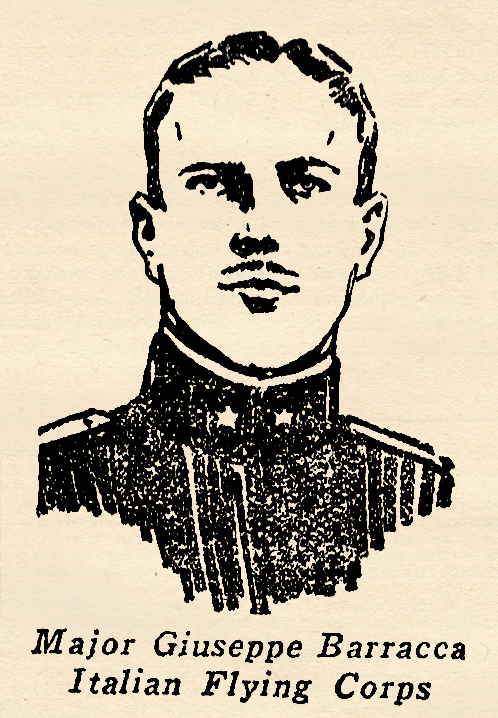 with Alan McLeod of the Royal Flying Corps, who was one of the youngest of the famous flying aces. Major Giuseppe Barracca, Ace of Aces of the Italian Flying Corps, was one of the oldest, being 34 years of age when he was killed in the desperate air fighting above the Piave. Like Captain Ritter von Schleich, he entered the war a cavalry officer, but soon was transferred to the more romantic, yet more hazardous branch of the army, the flying corps.
with Alan McLeod of the Royal Flying Corps, who was one of the youngest of the famous flying aces. Major Giuseppe Barracca, Ace of Aces of the Italian Flying Corps, was one of the oldest, being 34 years of age when he was killed in the desperate air fighting above the Piave. Like Captain Ritter von Schleich, he entered the war a cavalry officer, but soon was transferred to the more romantic, yet more hazardous branch of the army, the flying corps.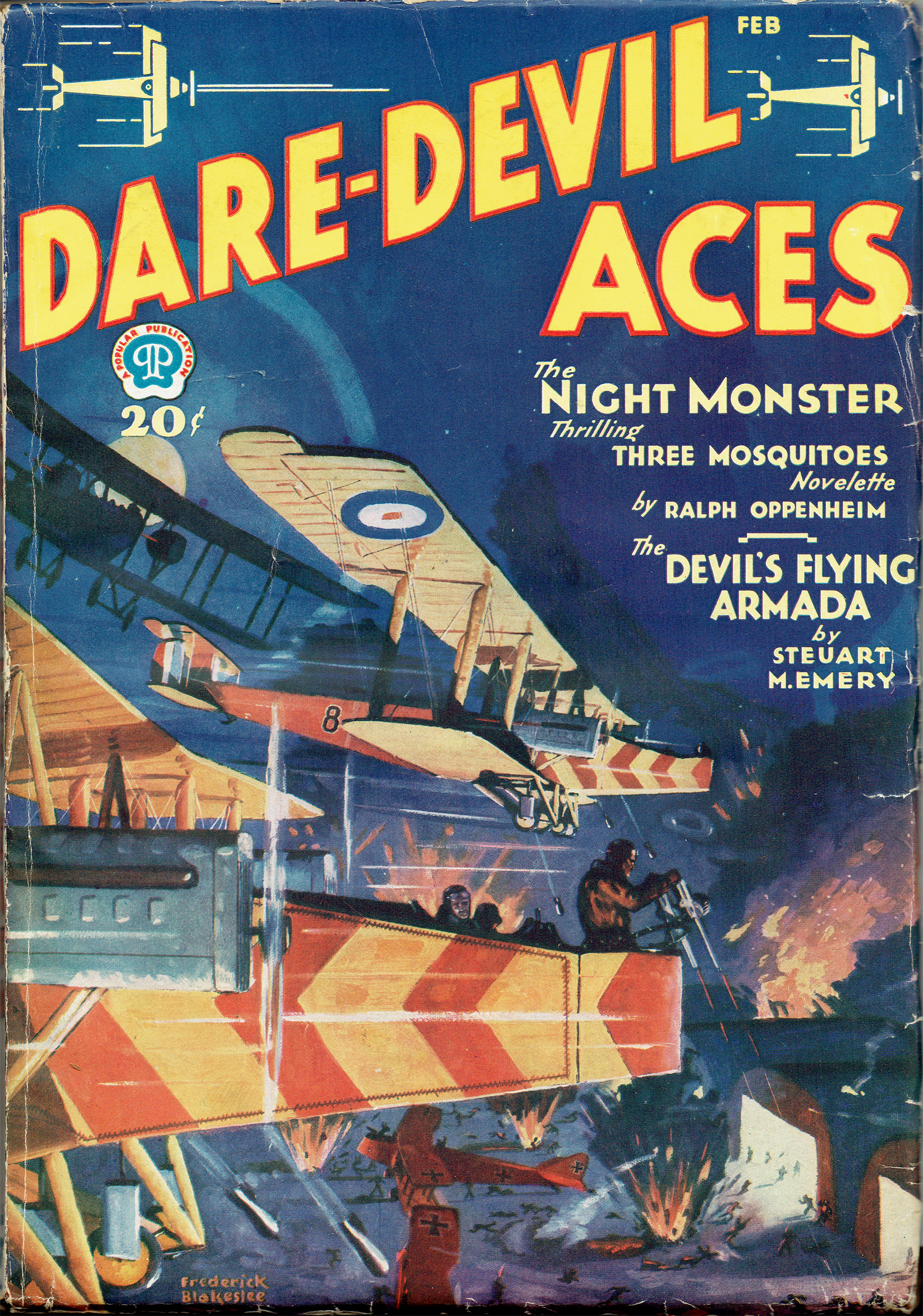
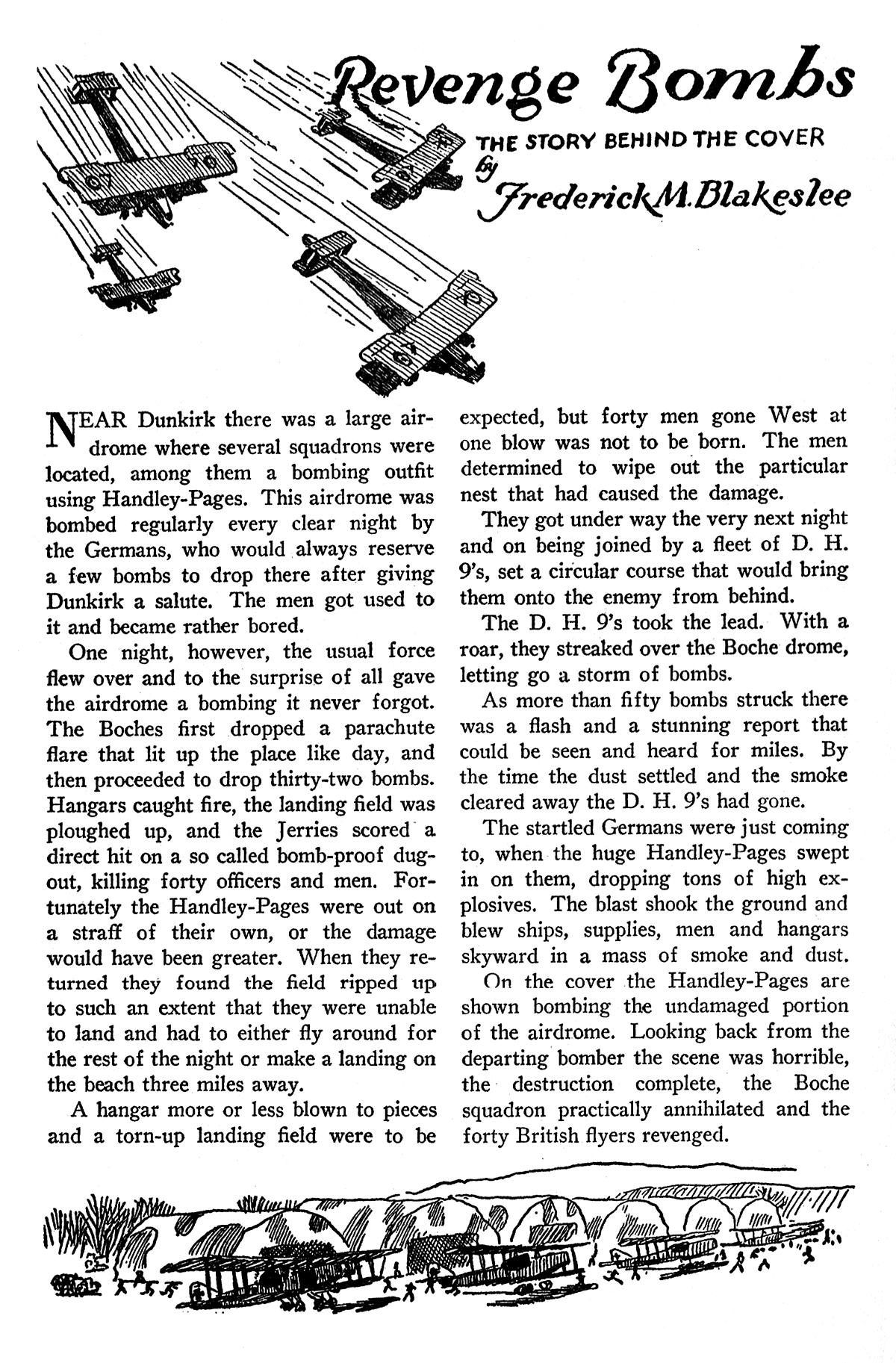
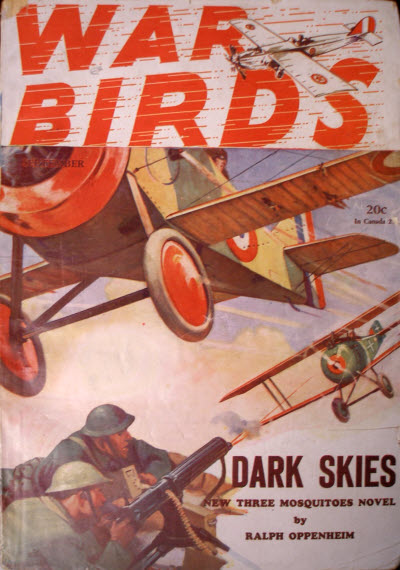 the third of three Three Mosquitoes stories we’re presenting this month. Every night at 11pm the Boche have been raining down bombs from seemingly nowhere with ever increasing accuracy—slowly getting closer to the Allies big supply dump in Remiens! Kirby, Shorty and Trav race to find out where the bombs are coming from and stopping them before the Boche finally hit their target! From the December 1930 number of War Birds, the Three Mosquitoes fly into Dark Skies!
the third of three Three Mosquitoes stories we’re presenting this month. Every night at 11pm the Boche have been raining down bombs from seemingly nowhere with ever increasing accuracy—slowly getting closer to the Allies big supply dump in Remiens! Kirby, Shorty and Trav race to find out where the bombs are coming from and stopping them before the Boche finally hit their target! From the December 1930 number of War Birds, the Three Mosquitoes fly into Dark Skies!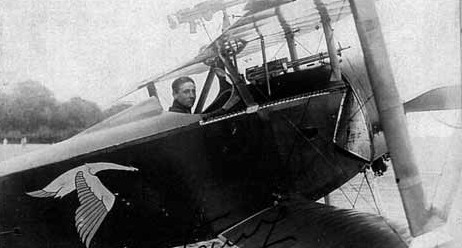
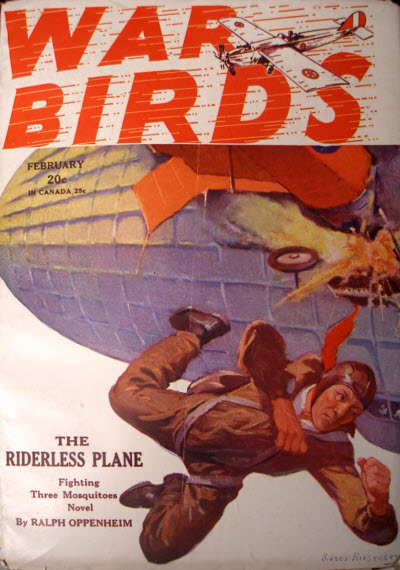 the second of three Three Mosquitoes stories we’re presenting this month. This week the inseparable trio tangle with the menace of the western front—the riderless plane! The mere thought of it sent a cold chill coursing up Kirby’s spine. It was all right to pit your skill and wits against an enemy pilot who, after all, was just a human being like yourself. But to face a freak plane which flew of its own accord, with its cockpit utterly empty—that was asking too much of any man. It seemed incredible, preposterous, this horrible machine without a pilot, shooting through the air like a streak, doing its deadly work, and then mysteriously vanishing. And yet, incredible as it was, it had taken its hold on the entire Allied air force and was slowly but surely breaking down their morale. From the February 1930 issue of War Birds, it’s “The Riderless Plane!”
the second of three Three Mosquitoes stories we’re presenting this month. This week the inseparable trio tangle with the menace of the western front—the riderless plane! The mere thought of it sent a cold chill coursing up Kirby’s spine. It was all right to pit your skill and wits against an enemy pilot who, after all, was just a human being like yourself. But to face a freak plane which flew of its own accord, with its cockpit utterly empty—that was asking too much of any man. It seemed incredible, preposterous, this horrible machine without a pilot, shooting through the air like a streak, doing its deadly work, and then mysteriously vanishing. And yet, incredible as it was, it had taken its hold on the entire Allied air force and was slowly but surely breaking down their morale. From the February 1930 issue of War Birds, it’s “The Riderless Plane!” the three Canadian airmen winning the coveted award of the Victoria Cross, the highest honor bestowed on its fighting heroes by the British Empire, He was the youngest flyer ever to receive the honor, having it pinned on his chest in appropriate ceremonies at Buckingham Palace a few months before his nineteenth birthday.
the three Canadian airmen winning the coveted award of the Victoria Cross, the highest honor bestowed on its fighting heroes by the British Empire, He was the youngest flyer ever to receive the honor, having it pinned on his chest in appropriate ceremonies at Buckingham Palace a few months before his nineteenth birthday.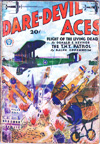
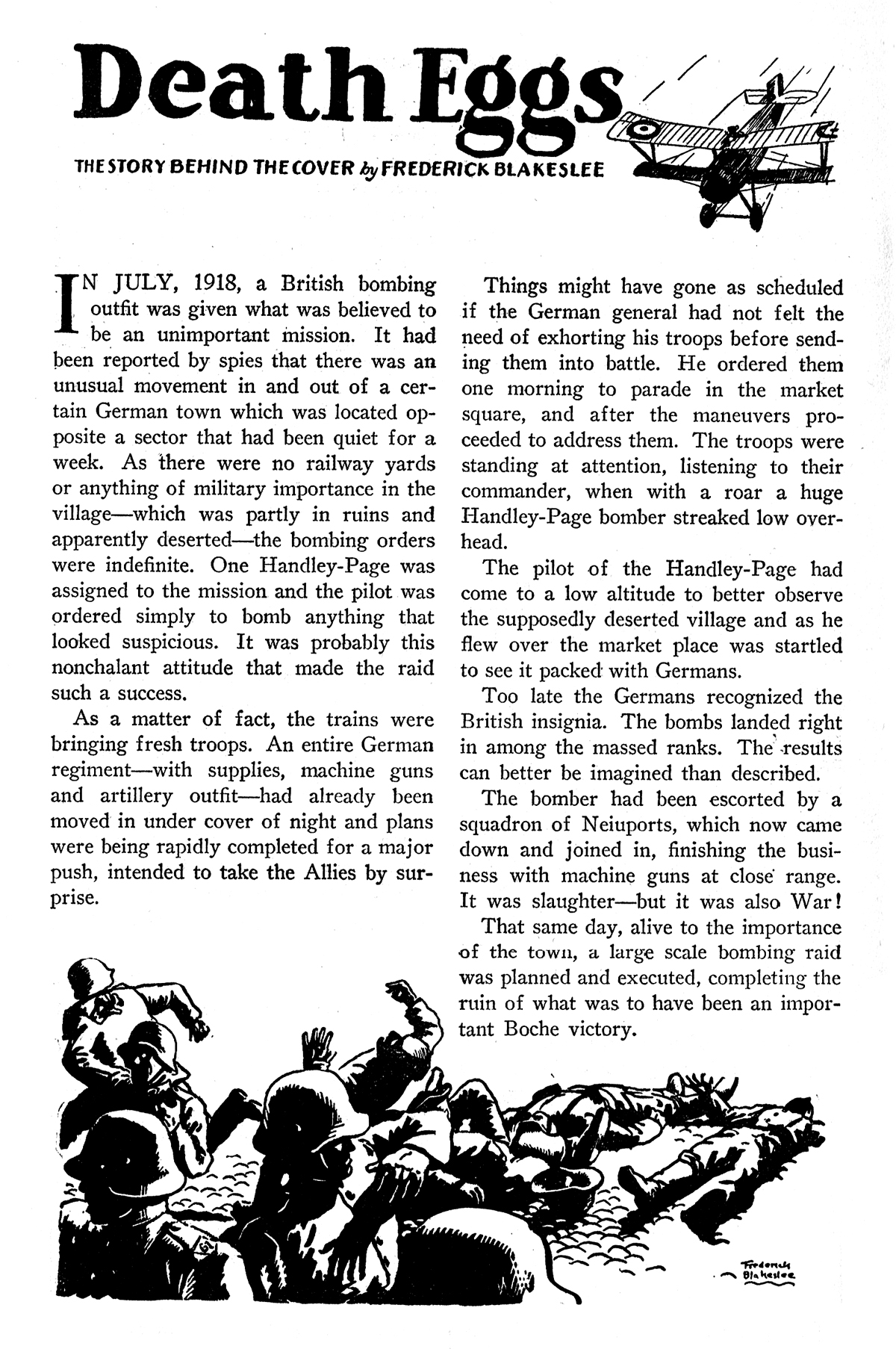
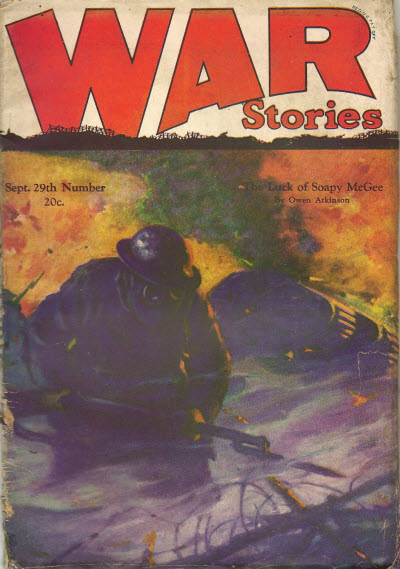 Mosquitoes—the unseasonably warm weather has brought the Mosquitoes out of hibernation to help get through the cold winter months, at Age of Aces dot net it’s our third annualMosquito Month! We’ll be featuring that wiley trio in three early tales from the Western Front. This week we have their third tale—the classic “Devil in the Air” in which Kirby is determined to take on the Boche’s new Fokker all by himself to prove it can be done only to realize there’s no beating the Inseparable trio!
Mosquitoes—the unseasonably warm weather has brought the Mosquitoes out of hibernation to help get through the cold winter months, at Age of Aces dot net it’s our third annualMosquito Month! We’ll be featuring that wiley trio in three early tales from the Western Front. This week we have their third tale—the classic “Devil in the Air” in which Kirby is determined to take on the Boche’s new Fokker all by himself to prove it can be done only to realize there’s no beating the Inseparable trio! was born near Winnipeg in Stonewall, Manitoba, Canada to Scottish emigrant parents on April 20th, 1899. Although he was only fifteen when England declared war, he tried to enlist every year until he was finally accepted by the R.F.C. in April 1917. He won his wings quickly—soloing after only three hours flying time. Graduating after completing 50 hours flying experience, McLeod shipped overseas in August 1917.
was born near Winnipeg in Stonewall, Manitoba, Canada to Scottish emigrant parents on April 20th, 1899. Although he was only fifteen when England declared war, he tried to enlist every year until he was finally accepted by the R.F.C. in April 1917. He won his wings quickly—soloing after only three hours flying time. Graduating after completing 50 hours flying experience, McLeod shipped overseas in August 1917.